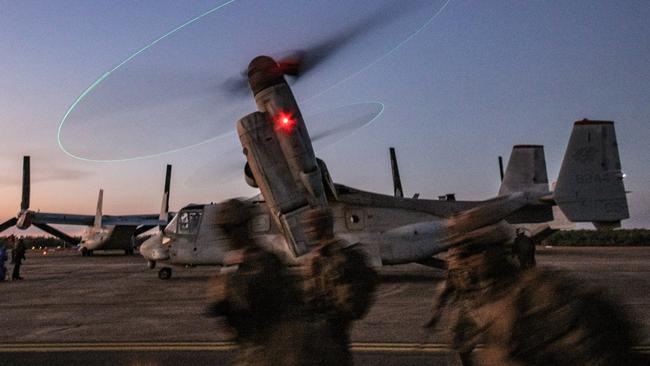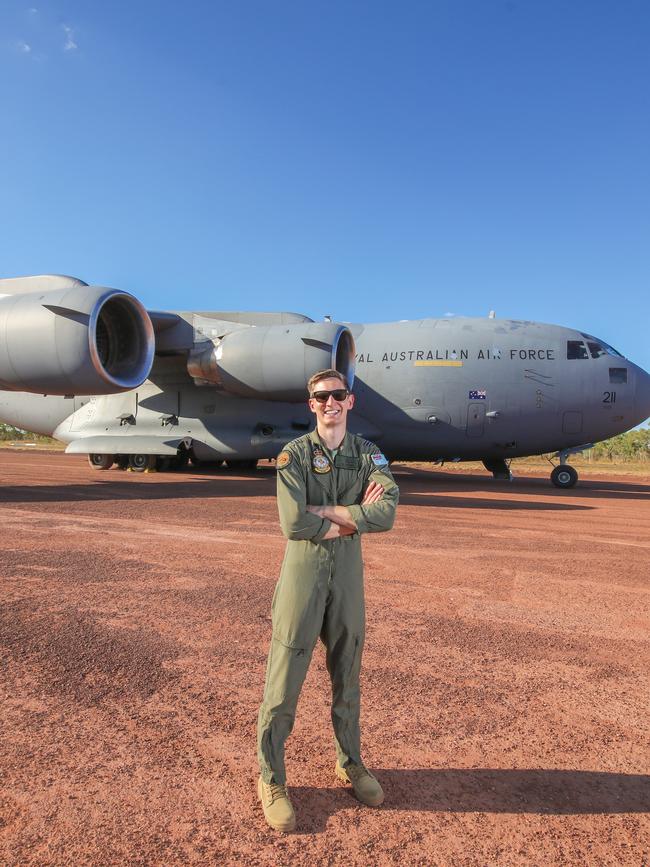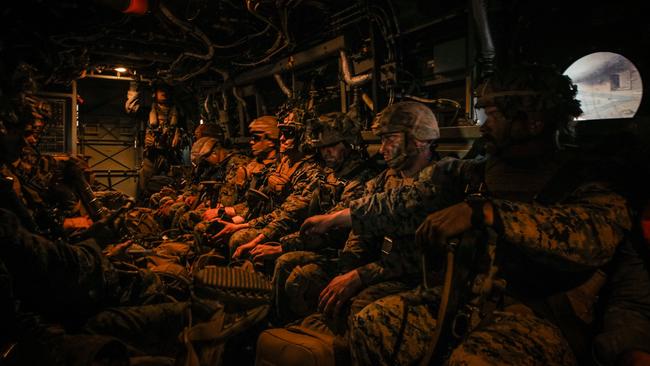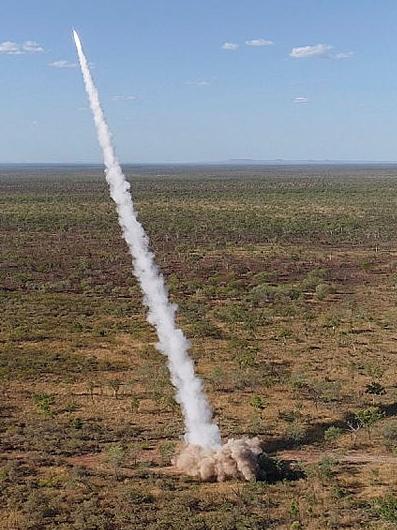TWO MV-22 Ospreys land outside an enemy airstrip on the hostile Bradshaw Island and two teams of US Marines stream out.
Their mission, to take the airfield for the allied forces, paving the way for an Australian C17 to land and deposit its cargo of two High Mobility Artillery Rocket Systems (HIMARS).
Once in place, the HIMARS will release their explosive payloads, destroying key enemy assets to allow further troop deployment and resulting in an allied victory, island secured for the good guys.
Standing in the marines’ way are Australian troops from the 1st Brigade but the island is — this time — fictional and the operation part of the joint US-Australian Exercise Loobye.

Being fiction, the Aussie Diggers have generously agreed to do their bit and let the marines have a win in securing the airfield so the pre-existing plan can come to fruition.
And while the rounds are blanks, the hardware on display is very real, with one of the HIMARS delivering its 90kg payload to target in a blast that would have obliterated anything in its path — making the desolate Bradshaw Training Area the perfect location for the exercise.
The man behind the controls of the C17 is 29-year-old Flight Lieutenant Tom Breaden, who started flying with the Royal Australian Air Force aged just 20 after first taking to the skies at 15.

Flt Lt Breaden said the value in the joint exercise was in reinforcing the Australian Defence Force’s interoperability with their American counterparts in the US Marines.
“We’re always looking to improve our interoperability with the US and this beds down our TTPs (tactics, techniques and procedures) in terms of us carrying these kinds of vehicles and then offloading,” he said.
“Then of course (the marines) are then practising what they need to do, so firing (the HIMARS) in this case.”

Managing things on the ground from the US side is marine Captain Timothy Bowman who said the attack on the mocked up surface-to-ship missile was an enormously complex logistical exercise.
“The complexity that goes into a HIMARS rapid insertion mission requires a significant amount of moving parts, a lot of planning, ultimately, as you’ve seen, a lot goes into the execution of it,” he said.
“To actually conduct an exercise like this demonstrates that not only do we have the planning capacity to do it but we have the ability to execute it.
MORE TOP NT NEWS
‘Devastating’: Half of Top End homes, businesses still without underground power
4 NT police officers ‘assaulted’: outcry for tougher penalties
High school to meet with students to discuss sexual consent

“It shows that we can do this in theatre together, we can use a RAAF C17, using its GPS, transporting an American HIMARS to a location in what’s more or less foreign territory for the US.”

Add your comment to this story
To join the conversation, please log in. Don't have an account? Register
Join the conversation, you are commenting as Logout
Hockey NT launches Northern Gateway Initiative master plan
Fuelled by its exclusion from the Australian competition, Hockey NT has officially launched a four-year master plan to safeguard and grow the code. Here’s what you need to know.
Acacia Inquiry reveals deep staff concern and substantial delays
More than a year after Acacia was pulled from Darwin and Palmerston EDs, there has been no date set for its reintroduction and staff are demanding significant change before they will go near it.